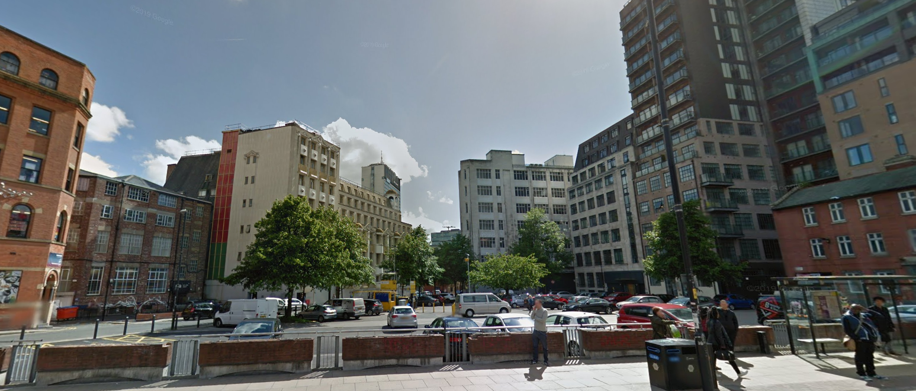Given that cities continue to become denser, the significance of natural light access in homes and businesses must be acknowledged. The idea of "Right to Light" has surfaced as a critical element for property developers, people with homes, and city planners together. With the rise of construction projects in city centers, understanding how daylight impacts properties is essential not only for regulatory compliance but also for fostering healthy relationships between new developments and current properties.
Right to Light surveys play a pivotal role in navigating the nuances of urban life. These assessments help determine the amount of daylight that a property receives and how potential developments might infringe upon this right. By grasping the regulations and historical context behind Right to Light in the UK, stakeholders can better anticipate challenges and circumvent disputes, ensuring that both new developments and renovations meet regulatory expectations while respecting the rights of neighboring properties. In this article, we will investigate various aspects of Right to Light considerations, providing information that are essential for those involved in property development today.
Understanding Light Rights
Right to light refers to the lawful right of a property owner to receive ambient light through designated windows or openings. In the UK, the right is primarily founded on common law, which enables individuals to claim continuous light to their property if they have enjoyed it for a period of twenty years. This means that if a neighbor's construction blocks this light, they may have grounds to take legal action. The concept balances the interests of developers and existing property owners, promoting a harmonious urban environment while protecting private property rights.
The importance of comprehending right to light lies in its implications for property development. When designing new buildings or extensions, developers must consider how their projects could affect the light availability for adjacent properties. A failure to take these considerations into account can lead to controversies, planning delays, and costly legal battles. Emphasizing right to light assessments from the start ensures that developments comply with legal standards while minimizing the likelihood of complaints from neighboring properties.
In dense urban areas, light rights issues often become particularly challenging. With limited space, taller buildings can easily obstruct light to existing properties, creating tensions between developers and local communities. As cities continue to develop, the right to light serves as a crucial issue for discussion in urban planning and expansion. Comprehending these rights not only aids developers in navigating juridical challenges but also helps maintain the quality of life for residents who rely on natural light in their homes.
Legal and Compliance Structure
The legal framework surrounding the entitlement to sunlight in the UK is primarily rooted in the case law principles that have evolved over years. It allows property owners to assert a right to receive light through defined openings. This right can be recognized after 20 years of continuous use or through clear grants in property deeds. Comprehending these judicial principles is essential for both developers and existing property owners as they navigate development matters.
Compliance with entitlement to light regulations is essential to avoid legal disputes and interruptions in development projects. Developers must take proactive steps, such as carrying out right to light assessments, to assess the effects of their projects on neighboring properties. If a development significantly obstructs light, it may lead not only to objections from affected neighbors but also to injunctive actions or lawsuits for damages. Therefore, knowledge of compliance requirements ensures that all parties honor both judicial rights and development obligations.

In handling right to light matters, seeking legal advice is strongly encouraged. Judicial experts can help elucidate the nuances of rights, potential infringements, and available remedies. Understanding the difference between a planning approval and legal rights to light can be decisive for development success. By synchronizing development plans with regulatory standards, developers can reduce risks and foster cooperative relationships with adjacent property owners, ultimately ensuring smoother project finalization.
Survey Method and Optimal Approaches
Carrying out a Light Access evaluation requires a systematic method to evaluate how new constructions may impact the daylight obtained by adjacent buildings. The procedure typically commences with a detailed review of the site, including the surrounding buildings, orientations, and any pre-existing lighting constraints. Creating a thorough understanding of present light levels is vital before progressing to the subsequent phases. https://righttolightsurveyors.uk/best-right-to-light-london/ makes use of cutting-edge modeling techniques and software tools to represent light conditions and forecast potential infringements.
Once the initial assessment is conducted, a comprehensive Daylight and Sunlight Documentation is prepared. This document details the outcomes of the evaluation, including any potential concerns related to light access. It is critical for stakeholders to work together closely during this stage to resolve any specific questions raised by neighbors or regulatory bodies. Additionally, consulting BRE Standards guarantees that the assessment complies with industry norms and provides a reliable framework for assessing the impact of building activities on light access.
Recommendations recommend commissioning Light Access assessments early in the architectural plans. This proactive approach enables developers to detect potential barriers before they escalate into conflicts. Furthermore, upholding open channels of dialogue with stakeholders can facilitate negotiations and prevent conflicts. Understanding and chronicling the findings not only helps in achieving construction permits but also fosters a fruitful relationship between developers and the community, guaranteeing that both entities are updated and protected.
